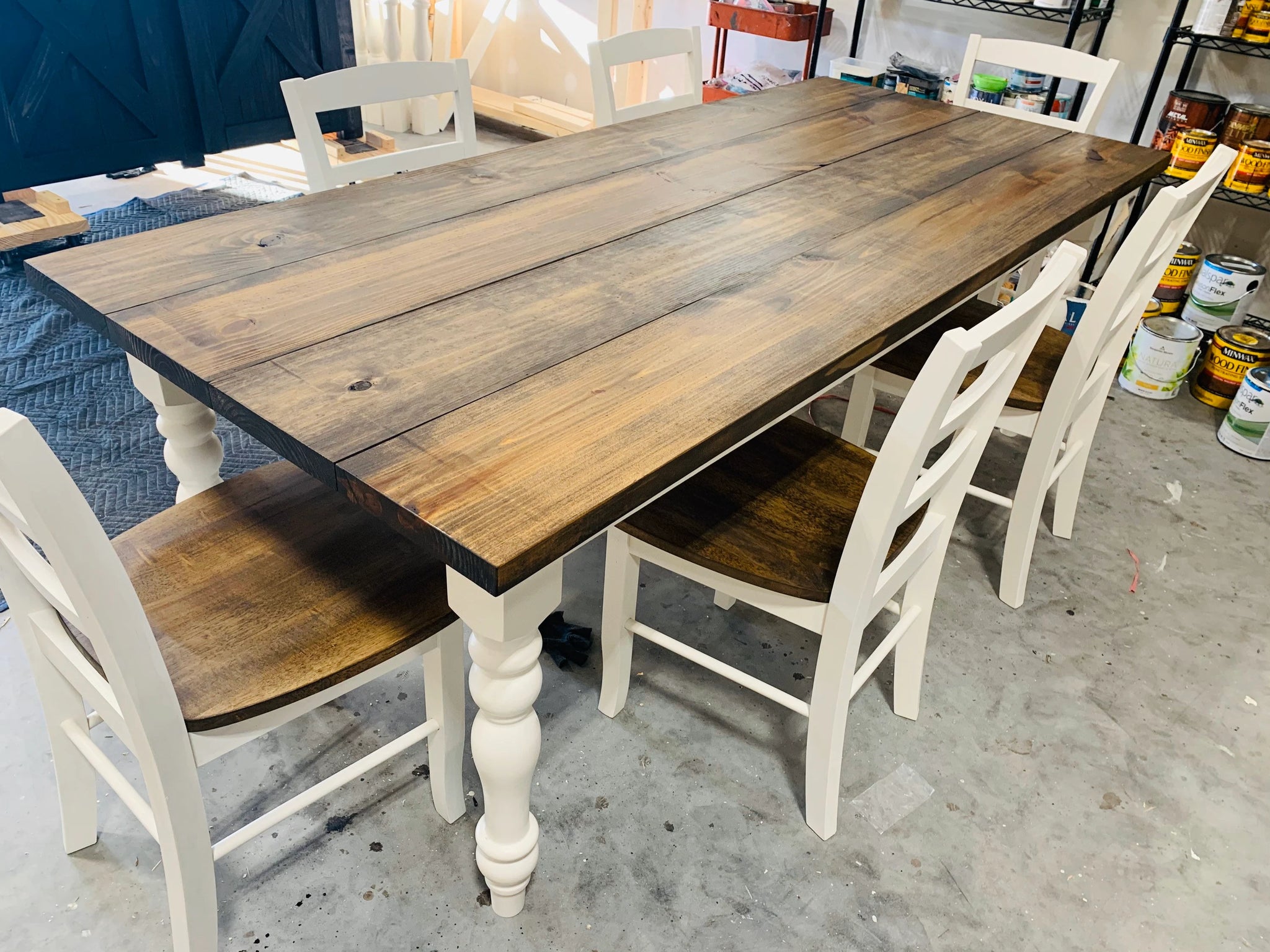Update Your Table's Appearance with Ornamental Dining Table Legs Wood Styles
Update Your Table's Appearance with Ornamental Dining Table Legs Wood Styles
Blog Article
Discovering the Various Sorts Of Table Legs Wood for Your Eating Area
The selection of dining table legs wood can exceptionally affect both the visual and useful high qualities of your dining area. Strong timber alternatives, such as oak and walnut, provide a classic look with unrivaled durability, while crafted wood alternatives offer ingenious styles that imitate the richness of natural grains.
Solid Timber Options

Furthermore, solid wood is renowned for its stamina and long life. Unlike crafted products, strong timber is much less vulnerable to bending and damages with time when appropriately kept. This makes it an ideal choice for families or those who frequently host events. Each piece of solid wood is unique, showcasing individual characteristics that contribute to the beauty and character of the dining table.
Furthermore, solid wood can be finished in numerous means, varying from all-natural oils to discolored surfaces, allowing house owners to customize their furniture to match their design. In summary, picking strong wood for eating table legs not just guarantees structural honesty however likewise enhances the aesthetic charm of the dining area, making it a rewarding financial investment for any home.
Engineered Timber Alternatives

Plywood, built from several layers of wood veneer, is specifically solid and stable, making it an excellent selection for dining table legs. Its split structure permits it to endure adjustments in moisture and temperature level much better than conventional strong wood. MDF, on the various other hand, uses a smooth surface for paint or veneering, enabling developers to achieve a refined look while preserving architectural integrity.
When choosing engineered timber alternatives, it is necessary to consider the designated use and preferred visual. These products not just improve the performance of eating areas however likewise enable for higher style versatility, making sure that modern and standard designs can exist side-by-side sympathetically.
Reclaimed Timber Includes
Recovered wood provides a distinct blend of sustainability and character, making it an increasingly popular selection for eating table legs. Sourced from old barns, manufacturing facilities, and other structures, redeemed wood symbolizes a history that brand-new products just can not duplicate. Each piece lugs its very own story, marked by distinctive blemishes, knots, and varying grain patterns, which add to a table's one-of-a-kind visual allure.
In enhancement to its aesthetic charm, recovered wood is an eco-friendly choice. By repurposing previously made use of products, it decreases the need for brand-new lumber, thus aiding to save forests and decrease waste. This aligns with an expanding consumer choice for sustainable practices in decor.
Moreover, reclaimed timber is usually a lot more resilient than freshly gathered wood because of its age. The natural drying out process that redeemed wood undertakes lead to a denser and stronger product, making it less prone to bending and splitting. This enhances the longevity of dining tables, permitting them to withstand the roughness of day-to-day use.
Softwood vs. Hardwood
When picking dining table legs, understanding the differences in between softwood and wood is critical for accomplishing both visual and useful goals. They normally show a more rustic appearance, making them ideal for informal or country-style dining spaces.
On the various other hand, hardwoods, sourced from deciduous trees like oak, maple, and cherry, are renowned for their thickness, strength, and resilience. The elaborate grain patterns and rich tones of woods offer a timeless and advanced allure, making them perfect for formal dining settings. While hardwoods have a tendency to be extra costly and larger, their durability versus deterioration typically warrants the financial investment.
Inevitably, the choice between softwood and wood for dining table legs need to straighten with your layout vision, use needs, and budget plan, making sure that your dining room mirrors your individual design while remaining useful gradually.

Finishes and Treatments
The aesthetic appeal and longevity of dining table legs can be significantly boosted with numerous coatings and treatments. These processes not just protect the wood from damages but also elevate its look, permitting it to enhance diverse indoor designs.
One common therapy is tarnishing, which penetrates the wood and enhances its natural grain while adding shade. Discolorations provide a rich, sophisticated look, allowing home owners to match their furniture with existing decor. Conversely, clear finishes such as polyurethane or varnish produce a safety layer without altering the wood's initial tone, making sure sturdiness against wear and tear.
In addition, natural oils, like tung or linseed oil, nurture the timber and offer a refined luster, all while being eco-friendly. These oils permit the surface area to take a breath, protecting against moisture accumulation and read the article potential bending.
For those seeking a rustic charm, troubled or weathered finishes can be put on produce an aged look, adding personality to the piece. Ultimately, the option of therapies and finishes relies on individual choice, wanted appearances, and the particular wood type, making it vital to consider these aspects when choosing table legs for your area.
Final Thought
Strong timbers, engineered choices, and redeemed options each deal distinct benefits, catering to various preferences and requirements. Inevitably, the selection of wood kind need to align with desired design, sturdiness, and environmental factors to consider, boosting the general eating experience.
The selection of eating table legs timber can exceptionally affect both the visual and practical high qualities of your eating space - Dining Table Legs Wood. Solid wood choices, such as oak and walnut, provide a traditional appearance with unequaled resilience, while engineered timber options use ingenious designs that imitate the splendor of all-natural grains. Strong timber uses a classic high Continue quality that can boost the general style of a dining area. Each item of solid timber basics is unique, showcasing private attributes that include to the appeal and personality of the eating table
In addition, recovered timber is often extra sturdy than recently harvested timber due to its age.
Report this page